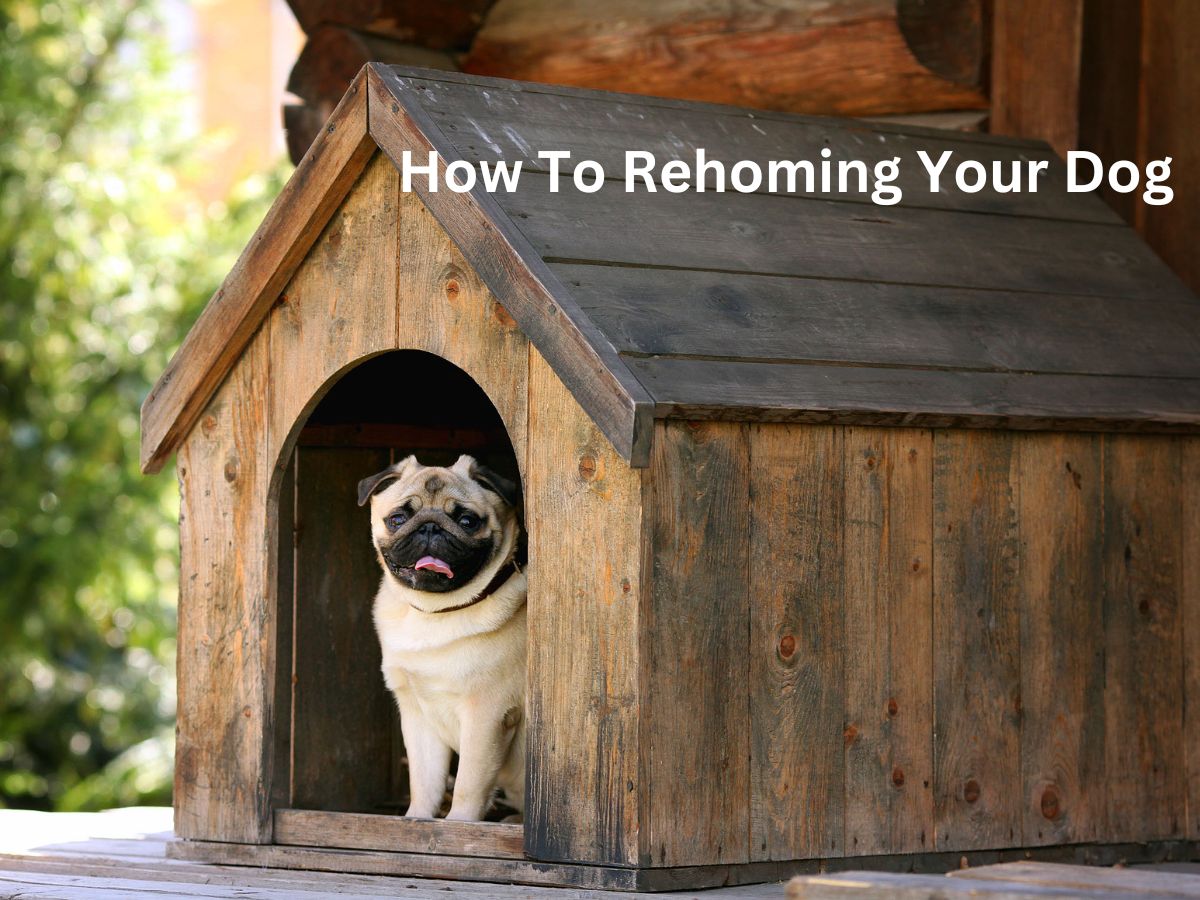Contents
- 1
- 2 1.Why You Might Need to Rehome Your Dog
- 2.0.0.0.1 How to rehoming a dog is never an easy decision, but sometimes it becomes necessary. There are many reasons why someone might need to find a new home for their dog. Changes in living situations, like moving to a place that doesn’t allow pets, can force this choice. Health issues, both for the owner or the dog, can also be a reason.
- 2.0.0.0.2 For example, some dogs develop medical conditions that require expensive treatment, or the owner might have health problems that make it hard to care for the dog properly. In other cases, behavioral issues might make it difficult for the dog to stay in the home, especially if there are children or other pets at risk.
- 2.0.0.0.3 Whatever the reason, it’s important to understand that rehoming your dog doesn’t make you a bad owner. It shows that you care enough to find a better place where your dog can thrive and be happy.
- 2.1
- 2.2 2.How to Make the Decision to Rehome
- 2.2.0.0.1 Deciding to rehome your dog is a tough and emotional process. Before making this decision, take the time to consider all other options. Could professional training help with behavioral issues? Could a family member or friend help care for the dog if you’re facing temporary problems? Sometimes, getting help from an animal behaviorist, a dog trainer, or even a vet can solve issues that seem overwhelming.
- 2.2.0.0.2 If these strategies fail and you continue to have difficulties in looking after your dog, rehoming could be the most suitable option. Considering your dog’s well-being is crucial when making this decision. If a change of home would lead to more happiness, health, or safety for your dog, it’s acceptable to opt for rehoming. Discuss with your friends or consult with professionals in the pet industry for advice on determining the most suitable course of action.
- 2.3
- 2.4 3.Preparing Your Dog for a New Home
- 2.4.0.0.1 After you have made the decision to find a new home for your dog, the next task is to prepare them for their fresh start. Begin by ensuring that they are in a state of good health. Bring your dog to the veterinarian for a thorough examination, update their vaccinations, and ensure they are parasite-free.
- 2.4.0.0.2 This will simplify the transition for the new owners. Creating a list of your dog’s behaviors, characteristics, and unique requirements can be beneficial. Is your dog fond of playing with specific toys? Do they fear loud sounds?
- 2.4.0.0.3 Is medication necessary or would a specialized diet suffice? Providing this information will assist the new owner in giving your dog optimal care. It’s recommended to collaborate with a trainer before adopting a dog with behavior problems to assist in their transition to a new environment.
- 2.5
- 2.6 4.Finding a Loving Home
- 2.6.0.0.1 Discovering the suitable residence for your canine is crucial during the rehoming procedure. You want to ensure that your dog is placed in a secure and caring setting. Begin by inquiring with friends, family, or neighbors if they are aware of anyone seeking a dog.
- 2.6.0.0.2 You can reach out to nearby shelters or rescue groups that focus on finding new homes for pets. Online platforms are available to connect you with potential adopters. Be sure to ask a lot of questions to confirm the new owner is suitable for your dog.
- 2.6.0.0.3 Do they know what breed your dog is? Is there a yard with a fence? Do they own any other animals, and what is their strategy for introducing them? Investing time in finding a caring home ensures your dog will receive proper care, giving you peace of mind.
- 2.6.0.0.4
- 2.7 5.Writing a Good Adoption Post
- 2.7.0.0.1 Crafting a well-written adoption post is essential in order to find the perfect home for your dog. When composing your post, begin with a distinct, attention-grabbing title that showcases the top attributes of your dog. For instance, “Labrador Mix in Need of New Home” is more effective than a vague description. When writing, be truthful and specific about your dog’s character, actions, and requirements. Provide key details such as age, breed, size, and compatibility with children and other animals.
- 2.7.0.0.2 Additionally, provide information about any specific training or medical requirements your dog may have. Include images of your dog in joyful, calm environments to help potential adopters form a connection with your dog.
- 2.7.0.0.3 Sharing your dog’s favorite toys and activities is beneficial. You are able to share this content on pet adoption websites, social media platforms, and community bulletin boards. Don’t forget to include your contact information so potential contacts can easily get in touch with you.
- 2.8
- 2.9 6.Meeting Potential New Families
- 2.9.0.0.1 When people show interest in adopting your dog, it’s important to meet them in person to ensure they are a good fit. Arrange to meet in a safe, neutral space, like a park, where your dog feels comfortable. Ask the potential adopters questions about their lifestyle and experience with dogs. Do they have a yard for your dog to play in? Are they home enough to care for your dog properly? If they have other pets or children, discuss how they will introduce your dog to them.
- 2.9.0.0.2 Let them spend time with your dog to see how they get along. It’s okay to be picky during this process; you want to make sure your dog is going to a safe and loving home. Don’t rush the meeting—make sure both you and your dog feel comfortable with the new family before moving forward.
- 2.9.0.0.3
- 2.10 7.Helping Your Dog Adjust to a New Home
- 2.10.0.0.1 Once you’ve found a new home for your dog, you can help make the transition easier. Before the move, pack a bag with your dog’s favorite toys, bed, and some food to make them feel more at home in their new environment. Share your dog’s daily routine with the new family, like feeding times and favorite walks, so they can keep things consistent.
- 2.10.0.0.2 On the day of the move, stay calm and positive, as your dog will pick up on your emotions. After the move, check in with the new family to see how your dog is adjusting. Sometimes, it can take a few weeks for a dog to settle into a new home, so be patient.
- 2.10.0.0.3 If your dog shows signs of stress, such as whining or not eating, suggest giving them extra time to relax. The new family can also help the dog feel more secure by giving plenty of love and sticking to a familiar routine.
- 2.10.0.0.4
- 2.11 8.How to rehoming a Dog Through a Shelter
- 2.11.0.0.1 If you are unable to find a new home for your dog yourself, rehoming through a shelter is a good option. Shelters and rescue groups often have programs in place to help find suitable adopters. Before bringing your dog to a shelter, research local facilities to find one that aligns with your needs.
- 2.11.0.0.2 Some shelters allow you to place your dog on a waiting list, while others offer online services that connect you with adopters without needing to surrender the dog to the shelter.
- 2.11.0.0.3 Be sure to provide the shelter with your dog’s full history, including medical records, behavior, and daily routines. This helps the shelter staff find the best match for your dog. Shelters work hard to ensure dogs are rehomed to responsible owners, so your dog will be in good hands if you choose this route. Always ask about their adoption policies and what steps they take to ensure the dog’s well-being in a new home.
- 2.12
- 2.13 9.Talking to Kids About Rehoming
- 2.13.0.0.1 Finding a new home for a dog can be a difficult choice for the entire family, particularly the children. Speaking to your children in a gentle and considerate manner is crucial. Begin by outlining the cause for the dog requiring a new residence.
- 2.13.0.0.2 Use easy language that they can grasp, and tell the truth without causing them to feel bad or accountable. Inform them that the dog will be going to a new caring family who will provide for its needs.
- 2.13.0.0.3 You can also motivate your children to inquire and share their emotions. Remind them that feeling sad is normal, and reassure them that the decision you are making is in the dog’s best interest. Allow them the opportunity to bid farewell and potentially make a small memento such as a picture or artwork to cherish their pet’s memory.
- 2.14
- 2.15 10.What to Do if You Can’t Rehome Your Dog
- 2.15.0.0.1 Sometimes, finding a new home for your dog might not happen as quickly as you hoped. In these cases, it’s important not to panic. First, reach out to friends, family, or neighbors who may know someone willing to adopt your dog.
- 2.15.0.0.2 You can also contact local rescue groups, shelters, or humane societies for help. Many of them have programs that help match pets with new owners. If those options don’t work, try posting about your dog on social media or pet adoption websites. Be sure to include all the important details about your dog, like their age, behavior, and medical history, so potential adopters know what to expect. If you’re truly struggling, you might consider fostering your dog until you can find a permanent solution.
- 2.15.0.0.3
- 2.16 11.How to Stay in Touch with Your Dog
- 2.16.0.0.1 If you have managed to find a new residence for your dog, you may still desire to maintain contact with your beloved pet. Before finalizing the rehoming process, have a discussion with the new owners to see if they are willing to receive updates.
- 2.16.0.0.2 Some families may give you the option to visit the dog or provide updates through photos and messages on their well-being. Respecting the boundaries of the new owners is crucial since they are now the main caregivers for the dog. Nevertheless, staying in contact can provide reassurance if they both agree, ensuring that your dog is content and being properly looked after.
- 2.16.0.0.3 Keep in mind that the shift also involves aiding your dog in adapting to their new life, thus allowing them sufficient time to connect with their new family as well.
- 2.17
- 2.18 12.Caring for Senior Dogs
- 2.18.0.0.1 Elderly dogs require extra attention and care, particularly when deciding to find them a new home. Elderly dogs could experience health issues such as arthritis or mobility issues, and could require additional trips to the veterinarian.
- 2.18.0.0.2 Ensure that you communicate these requirements to all possible new proprietors. Emphasize the unique qualities of your older dog, like their tranquil demeanor or unwavering devotion. Elderly dogs are typically less energetic, making them a suitable choice for a peaceful home.
- 2.18.0.0.3 When considering giving a senior dog a new home, keep in mind that there are many individuals who are open to adopting older animals, particularly those seeking a less energetic companion compared to a young dog. Have patience and invest time in finding the perfect companion for your older dog.
- 2.18.0.0.4
- 3 What Should Owners Do After Rehoming Their Dog?
- 3.0.0.0.1 Rehoming a dog is an emotional decision, and once it’s done, it’s natural to feel a range of emotions like sadness, guilt, or even relief. After finding a new home for your dog, it’s important to take some steps for both your well-being and to ensure the dog transitions smoothly to its new life. Here are some things you can do after rehoming your dog:
- 3.0.0.0.2
- 3.0.1 Give Yourself Time to Adjust
- 3.0.2
- 3.0.3 Communicate with the New Owners
- 3.0.3.0.1 If possible, maintain a friendly relationship with the new owners. Many people find comfort in knowing how their dog is settling into its new home. A quick text, email, or phone call to check in can help ease your mind. Of course, this depends on the agreement you made with the new owners; some might prefer a clean break, while others are open to sending updates.
- 3.0.3.0.2
- 3.0.4 Focus on Positive Changes
- 3.0.4.0.1 Rehoming your dog often happens because circumstances have changed and you’re unable to provide the care they need. Now that your dog is in a better situation, you can focus on your life and the changes you made the decision for. Whether it’s focusing on work, moving to a new place, or other personal reasons, give yourself time to adapt to your new routine.
- 3.0.4.0.2
- 3.0.5 Learn from the Experience
- 3.0.5.0.1 Every pet owner learns valuable lessons through the journey of having a dog. Think about the things that were successful and the things that were not successful. In the future, if you choose to adopt another pet, you can apply these lessons to find a better fit for your lifestyle and situation. Understanding the reasons behind why rehoming was needed can prevent a repeat of the situation in the future.
- 3.0.5.0.2
- 3.0.6 Know You Did the Right Thing
- 3.0.6.0.1 The decision to rehome a dog is rarely easy, but it’s important to remember that you did what was best for the dog. If they’re in a better home where their needs can be fully met, you can feel good about your decision. Over time, the emotions you’re feeling will settle, and knowing your dog is happy and cared for will help bring peace of mind.
- 3.0.6.0.2
- 4 FAQ
- 5
- 6 conclusion
How to Rehoming your dog is a difficult decision, but sometimes it’s necessary for the well-being of both you and your pet. Understanding the process and making thoughtful, informed choices can help ensure your dog transitions to a loving new home. This guide will walk you through each step of rehoming, offering practical advice to ease the emotional and logistical challenges of finding a suitable family for your dog.
1.Why You Might Need to Rehome Your Dog
How to rehoming a dog is never an easy decision, but sometimes it becomes necessary. There are many reasons why someone might need to find a new home for their dog. Changes in living situations, like moving to a place that doesn’t allow pets, can force this choice. Health issues, both for the owner or the dog, can also be a reason.
For example, some dogs develop medical conditions that require expensive treatment, or the owner might have health problems that make it hard to care for the dog properly. In other cases, behavioral issues might make it difficult for the dog to stay in the home, especially if there are children or other pets at risk.
Whatever the reason, it’s important to understand that rehoming your dog doesn’t make you a bad owner. It shows that you care enough to find a better place where your dog can thrive and be happy.
2.How to Make the Decision to Rehome
Deciding to rehome your dog is a tough and emotional process. Before making this decision, take the time to consider all other options. Could professional training help with behavioral issues? Could a family member or friend help care for the dog if you’re facing temporary problems? Sometimes, getting help from an animal behaviorist, a dog trainer, or even a vet can solve issues that seem overwhelming.
If these strategies fail and you continue to have difficulties in looking after your dog, rehoming could be the most suitable option. Considering your dog’s well-being is crucial when making this decision. If a change of home would lead to more happiness, health, or safety for your dog, it’s acceptable to opt for rehoming. Discuss with your friends or consult with professionals in the pet industry for advice on determining the most suitable course of action.
3.Preparing Your Dog for a New Home
After you have made the decision to find a new home for your dog, the next task is to prepare them for their fresh start. Begin by ensuring that they are in a state of good health. Bring your dog to the veterinarian for a thorough examination, update their vaccinations, and ensure they are parasite-free.
This will simplify the transition for the new owners. Creating a list of your dog’s behaviors, characteristics, and unique requirements can be beneficial. Is your dog fond of playing with specific toys? Do they fear loud sounds?
Is medication necessary or would a specialized diet suffice? Providing this information will assist the new owner in giving your dog optimal care. It’s recommended to collaborate with a trainer before adopting a dog with behavior problems to assist in their transition to a new environment.
4.Finding a Loving Home
Discovering the suitable residence for your canine is crucial during the rehoming procedure. You want to ensure that your dog is placed in a secure and caring setting. Begin by inquiring with friends, family, or neighbors if they are aware of anyone seeking a dog.
You can reach out to nearby shelters or rescue groups that focus on finding new homes for pets. Online platforms are available to connect you with potential adopters. Be sure to ask a lot of questions to confirm the new owner is suitable for your dog.
Do they know what breed your dog is? Is there a yard with a fence? Do they own any other animals, and what is their strategy for introducing them? Investing time in finding a caring home ensures your dog will receive proper care, giving you peace of mind.
5.Writing a Good Adoption Post
Crafting a well-written adoption post is essential in order to find the perfect home for your dog. When composing your post, begin with a distinct, attention-grabbing title that showcases the top attributes of your dog. For instance, “Labrador Mix in Need of New Home” is more effective than a vague description. When writing, be truthful and specific about your dog’s character, actions, and requirements. Provide key details such as age, breed, size, and compatibility with children and other animals.
Additionally, provide information about any specific training or medical requirements your dog may have. Include images of your dog in joyful, calm environments to help potential adopters form a connection with your dog.
6.Meeting Potential New Families
When people show interest in adopting your dog, it’s important to meet them in person to ensure they are a good fit. Arrange to meet in a safe, neutral space, like a park, where your dog feels comfortable. Ask the potential adopters questions about their lifestyle and experience with dogs. Do they have a yard for your dog to play in? Are they home enough to care for your dog properly? If they have other pets or children, discuss how they will introduce your dog to them.
Let them spend time with your dog to see how they get along. It’s okay to be picky during this process; you want to make sure your dog is going to a safe and loving home. Don’t rush the meeting—make sure both you and your dog feel comfortable with the new family before moving forward.



